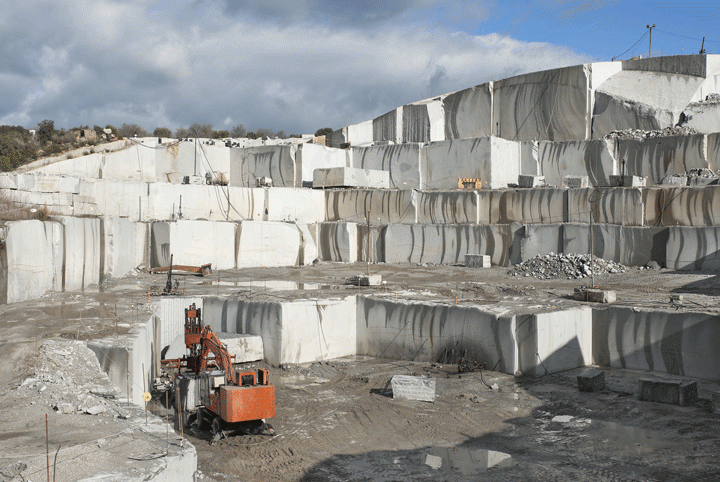Introducing the Mysteries of Granite Quarrying: Where Strength and Style Meet
The world of granite quarrying is a world where the raw strength of nature assembles with human virtuosity to create structures that stand the examination of time with an air of style. From the depths of quarries to the precise sprucing up in workshops, the procedure of transforming granite into architectural wonders is an intricate dancing of tradition and development. As we peer right into the midsts of this old craft, we begin to uncover the concealed details that form the very essence of our developed setting.
The Beginnings of Granite Quarrying
In the annals of architectural history, the origins of granite quarrying are shrouded in a tapestry of old workmanship and geological wonders. Dating back to ancient Egypt and Mesopotamia, the removal of granite from quarries marked the beginning of a journey that would at some point lead to the development of several of the globe's most renowned structures.
Granite quarrying's origins can be traced to the competent craftsmens that acknowledged the rock's toughness and aesthetic allure. Through a mix of primitive devices and sheer decision, these early quarry employees uncovered granite blocks that would come to be the foundation of people.
As civilizations advanced, so did the techniques of quarrying granite. The Romans, renowned for their design expertise, established innovative techniques for drawing out granite to construct monuments, temples, and roadways that stood the examination of time.
The heritage of these ancient quarrying practices proceeds to form modern-day architecture, with granite remaining a sign of toughness and style in building projects around the globe. (granite quarries in south africa)
Devices of the Quarrying Trade
The development of granite quarrying strategies from old civilizations to contemporary times highlights the essential function played by the tools of the quarrying sell forming the market's practices. In old times, quarrying tools were basic, often being composed of blades, hammers, and wedges made from materials like bronze or iron. These devices required substantial manpower and time to extract granite blocks from quarries.

In addition, the intro of pneumatic tools and high-powered machinery has actually significantly decreased the physical labor needed in quarrying operations, enhancing worker safety and productivity. As the quarrying industry remains to innovate, the devices of the profession continue to be at the center of driving progression and forming the future of granite removal.
Drawing Out Blocks of Granite
Using precision equipment and see post advanced methods, the extraction of granite blocks from quarries has become a sophisticated process in the contemporary quarrying market. The preliminary action includes recognizing the location and dimension of the granite deposit to determine the most effective extraction approach. As soon as an appropriate site is selected, the removal procedure starts with the boring of holes for the placement of dynamites. Regulated blowing up strategies are after that used to damage apart the granite right into convenient areas.

Sprucing Up and Ending Up Strategies
To accomplish a flawless surface on granite blocks, knowledgeable craftsmens employ a series of meticulous sprucing up and finishing techniques. After the preliminary extraction and shaping procedures, the granite blocks undergo a thorough sprucing up phase to boost their all-natural charm and longevity.
Along with polishing, finishing techniques are put on further refine the granite's look. These strategies may include flaming, sharpening, or brushing, each offering distinct structures and coatings to match different aesthetic preferences. Flaming, for example, involves exposing the granite surface to high temperature levels to develop a harsh, textured finish, suitable for outside applications where slip-resistance is essential. Developing, on the various other hand, gives a matte finish that is smooth to the touch, ideal for indoor kitchen counters and flooring. By very carefully picking and using these brightening and ending up strategies, craftsmens can transform raw granite blocks into elegant pieces that showcase both stamina and sophistication.

Ecological Impact and Sustainability
With the growing emphasis on environmental awareness in the industry, granite quarrying practices are progressively inspected for their influence on natural deposits and lasting sustainability. Quarrying for additional reading granite can have substantial environmental implications. The removal process typically involves the usage of hefty machinery, nitroglycerins, and big amounts of water, leading to habitat destruction, soil disintegration, and water pollution. Furthermore, the transport of granite from quarries to processing facilities produces carbon exhausts, even more adding to ecological degradation. granite quarries in south africa.
To reduce these effects and make certain sustainability in granite quarrying, industry stakeholders are adopting various procedures. Applying innovative technologies to decrease energy usage and water use, redeeming quarried land for eco-friendly reconstruction, and promoting image source responsible sourcing practices are some strategies being employed. Additionally, accreditations such as the Forest Stewardship Council (FSC) and the Management in Power and Environmental Style (LEED) assistance consumers determine ecologically pleasant granite items.
Conclusion
In conclusion, granite quarrying is a process that calls for specialized devices and methods to remove blocks of granite and brighten them to a high level of finish. While the environmental influence of quarrying can be substantial, initiatives are being made to boost sustainability techniques in the sector. Overall, granite quarrying is a fragile equilibrium in between utilizing the strength and elegance of this all-natural stone while minimizing its influence on the atmosphere.